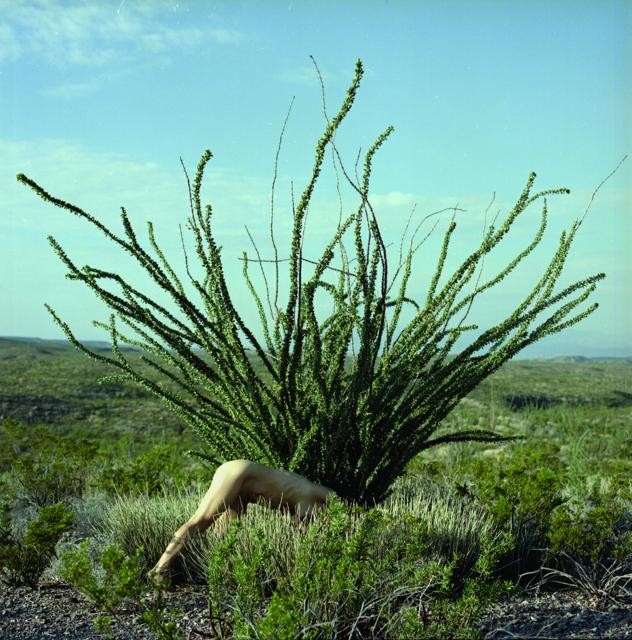I can think of only a few moments in my 27 years when art has evoked what some might call a “religious experience.” Seeing Sally Mann’s Deep South photographs in person was one of them. Getting to preview a small collection of those same photographs in an empty Castell Photography Gallery last summer was another.
Over the last six years Castell Photography Gallery has organized an uninterrupted roster of the most innovative and intelligent photography exhibitions that Asheville has yet seen. The gallery has shown some of the medium’s greatest practitioners — historic and contemporary, national and local — from Mann to Adam Void, Imogen Cunningham to Sarah Anne Johnson.
But that has now come to an end. On Friday, June 19, Castell Photography Gallery will host a closing reception for its current and final exhibition, The Portrait and Landscape in Contemporary Photography. The gallery will permanently close the following day as owner Brie Castell prepares to move out of the country.
Since opening, Castell has set itself apart from other galleries through its sole, uncompromising focus on manual photography. Brie Castell and gallery director Heidi Gruner championed skill, technique and cultural import over hype, status and locale. They also helped usher in the now-prolific return of hand-manipulated, experimental printing techniques that date back to the 19th century.
This didn’t happen over night. “It took us a while to get off the ground,” Castell says. The earliest openings focused on the medium’s aesthetics and techniques, largely in a rigid, textbook manner. But Castell and Gruner soon broke with that formula and began embracing their personal tastes.
Sewn, burned, scratched and other modified or imperfect works became the in-house standard as Castell and Gruner sought out images and artists using obscure and abstract darkroom techniques. Six years ago these styles were neither prized nor popular. Now they are. And with each show the gallery evolved into a museumlike reliquary for bygone photo methods. “We had to learn to trust out own voices,” Castell says. “That helped us and the gallery grow into something bigger and more fulfilling.”
They also turned a space that should have failed — a dim, unassuming storefront in a low-traffic alley off Biltmore Ave. — into a successful business and an immaculate piece of architectural design. The gallery itself resembled a black-box theater, defying the normative museum-white walls while simultaneously lending a vaudevillian ambiance to each show.
Of all the exhibits that the duo organized, MERGE continues to stand out as their favorite. The show debuted in August 2014 and featured photographs from three prominent East coast collectors in combination with works by emerging photographers. Henri Cartier-Bresson, Lee Friedlander and André Kertész were among the dozen or more big-name photographers who shared wall space with Aspen Hochhalter, Stacey Page and Amy Friend. The combination also proved popular with gallery visitors, whose numbers swelled for the duration of the show. For many, including myself, it was the first and perhaps only chance to see so many photographic giants on view in Asheville.
“Photography is an important fiber in our culture,” Gruner says. “I feel like anything that we could possibly do to advocate for makers producing important work that is both challenging and exciting is worth all of the work.”
Letting go of that work has not been as easy decision. The biggest demon of all, Castell says, is leaving at the moment when they feel on the brink of something big. But change is both constant and necessary, and it’s for good reason — Castell is leaving Asheville to join her fiancé off the coast of Belize where she hopes to reignite her own photography career.
When a gallery pulls in artists, collectors and enthusiast from all over the country, as Castell Photography Gallery so often did, it creates a richer experience for everyone involved. It raises the caliber of works being shown and created here in Asheville, boosts our credibility as an arts city and it makes the art community stronger.




Before you comment
The comments section is here to provide a platform for civil dialogue on the issues we face together as a local community. Xpress is committed to offering this platform for all voices, but when the tone of the discussion gets nasty or strays off topic, we believe many people choose not to participate. Xpress editors are determined to moderate comments to ensure a constructive interchange is maintained. All comments judged not to be in keeping with the spirit of civil discourse will be removed and repeat violators will be banned. See here for our terms of service. Thank you for being part of this effort to promote respectful discussion.